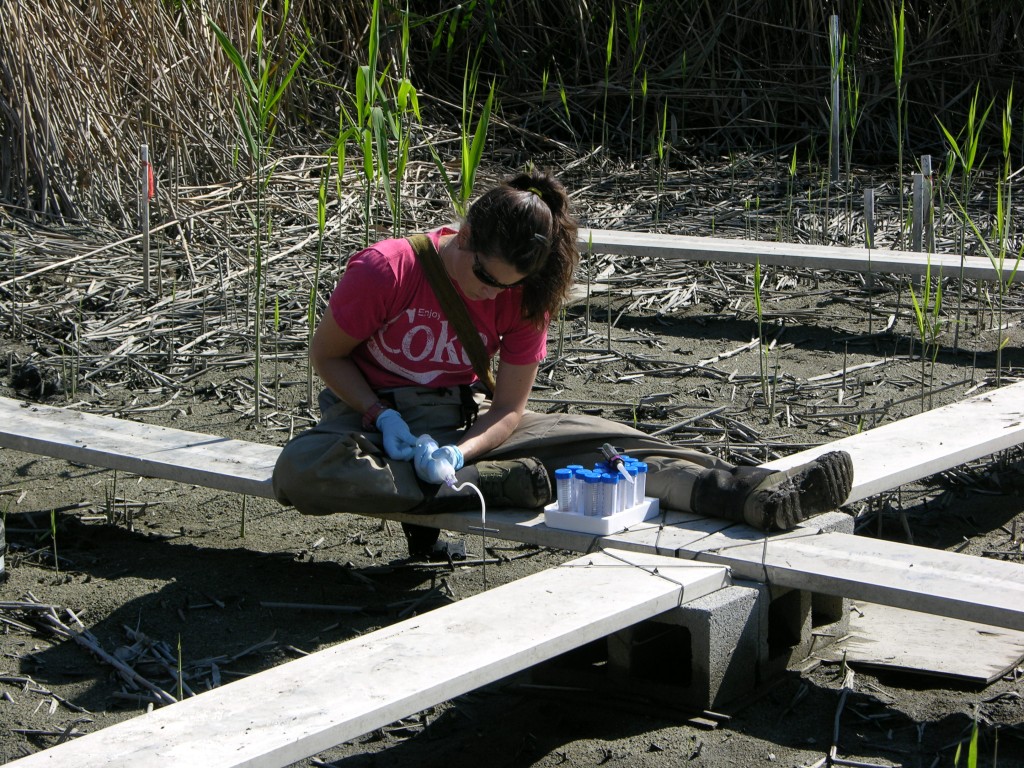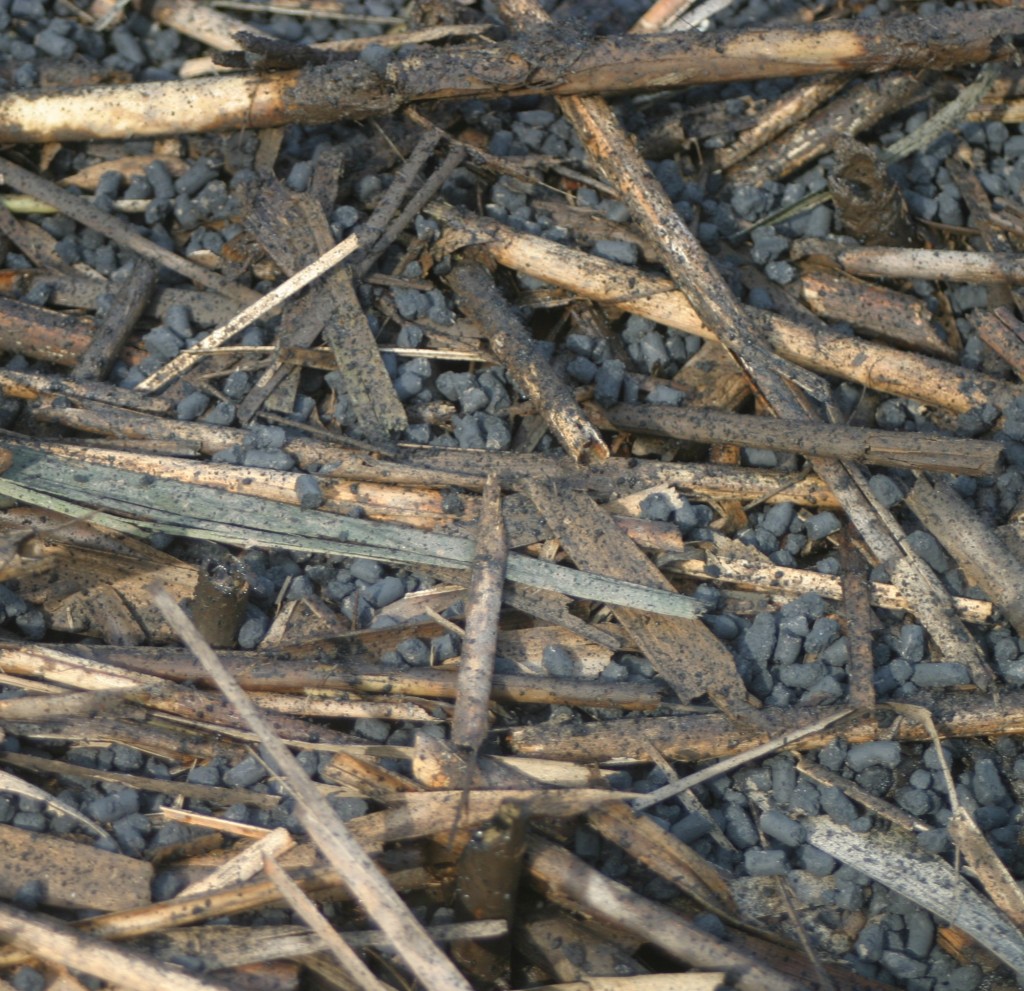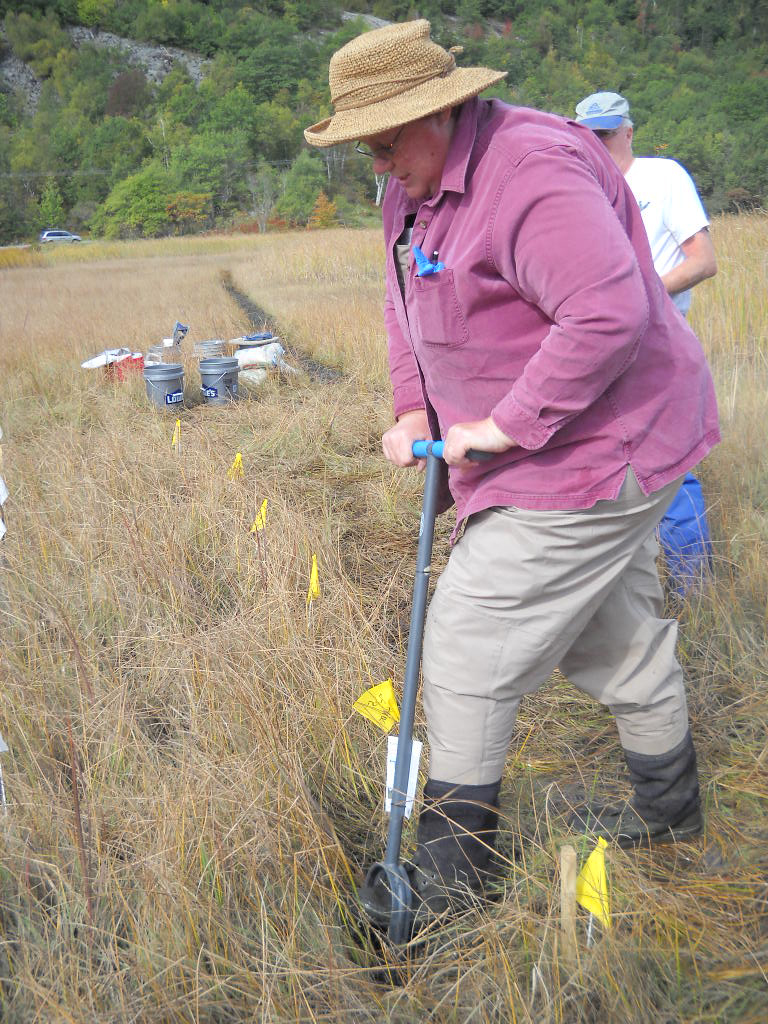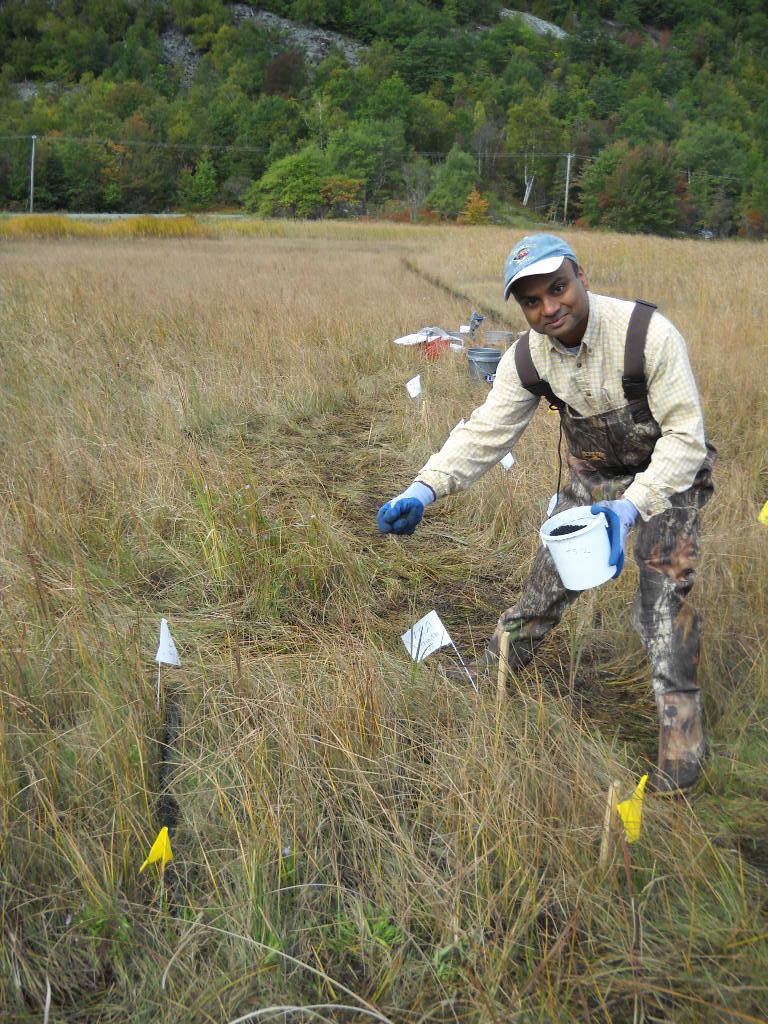by Kristen Minogue

Ally Bullock, a technician in SERC’s mercury lab, draws pore water samples from a mid-Atlantic Superfund site. (SERC)
There are places in the U.S. so polluted, eating fish or crabs from their waters isn’t just unhealthy—it can be illegal. The Environmental Protection Agency calls sites like that “Superfund sites,” a label for abandoned or neglected sites that became dumping grounds for hazardous waste. Some of the highest levels of mercury contamination in the U.S. exist in Superfund sites. Cynthia Gilmour knows this first-hand. As a microbial ecologist at the Smithsonian Environmental Research Center, she has worked in several. But short of digging up the polluted sediments and dumping them elsewhere (an expensive and ecologically risky proposition), not many methods exist to get rid of the problem.
“If we use the traditional technologies of removing that and putting it in a landfill, we don’t have a wetland anymore,” says Upal Ghosh, an environmental engineer from the University of Maryland, Baltimore County, who works with Gilmour.
This fall, Gilmour and Ghosh explored a new technique: using charcoal to trap it in the soil.

Activated carbon pellets. Because many chemicals stick to activated carbon, it can keep mercury in the soil and out of the water. (Upal Ghosh/UMBC)
The technical term is activated carbon. Activated carbon is a type of black carbon superheated to increase the ability of other chemicals to stick to it. It can come from wood, coal, or any kind of recycled biomass. Humans have been using it since the First World War, in gas masks that filtered lethal toxins out of mustard gas in the trenches. It also filters water, gives sugar its clear-white color and treats poison victims.
“If someone accidentally or intentionally ingests poison, the first thing doctors would do is give them a glass of activated carbon,” Ghosh says. “What it does is, it goes into the stomach and sucks out the pollutants before the blood can take it out.” But while activated carbon had been proven to help other toxin problems, including mercury-contaminated water, it had never been tested for mercury-contaminated soils.
If mercury could be trapped in the soil—ensuring it wouldn’t seep into the water at all—the risk of exposure would drop dramatically. With funding from both the federal government and industries, Gilmour and Ghosh’s labs looked at contaminated underwater sediments from four locations: a river, a freshwater lake and two brackish creeks. They added three different treatments to each soil in laboratory, including activated carbon.

Cynthia Gilmour collects a soil core from a marsh in Maine, to test in lab for mercury and other chemicals. (SERC)

Upal Ghosh spreads SediMite, a mixture containing activated carbon, onto a mercury-polluted marsh in Maine. (SERC)
However, it wasn’t enough to trap mercury alone. They also needed to trap its more dangerous sibling: methylmercury, a neurotoxin created by microbes in the soil. Once created, methylmercury works its way up the food web, becoming up to 10 times more concentrated at each new level. By the time it reaches humans, it can damage the immune system and nervous system, and harm the brains of developing embryos.
“Methylmercury is more toxic and more easily passed up food webs than inorganic mercury,” Gilmour says. “To make contaminated sites safe again, we need to reduce the amount of methylmercury that gets into animals.” So the team also tested worms, to see how much methylmercury actually managed to enter the food chain.
The activated carbon performed brilliantly. Adding carbon pellets in an amount equal to just 5 percent of the surface sediment lowered methylmercury in the surrounding water by 50 to 95 percent. The worms also took up less methylmercury, with concentrations dropping between 30 and 90 percent compared to untreated soils, according to the study published in October. Only one other treatment came close, says Ghosh, and it was too expensive to be practical. The other benefit to activated carbon is its ability to bind up other chemicals, including cancer-causing PCBs.
Gilmour’s lab is now testing charcoal in the field at several mercury-contaminated Superfund sites across the country. The technique is simple: Spread carbon pellets across the surface, without disturbing it, and leave the mineral in place to mix into the contaminated sediment. If successful, activated carbon could slash the risk to people and food webs without the high cost of digging up the ecosystem. And, just possibly, some of these sites might be safe for fishing again.

